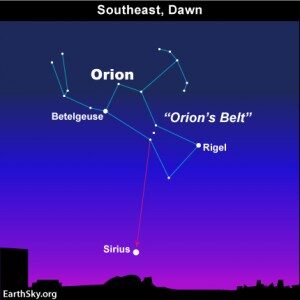
The term “dog days of summer” refers to a time of hot and humid weather in the Northern Hemisphere, usually in July and early August.
The phrase is not a reference to lazy dogs lying around on hot and humid days. It refers to the stars in the sky.
This time period coincides with the rising of the star of Sirius, or the Dog Star. Sirius is part of the “Greater Dog” constellation Canis Majoris. Sirius follows Orion, as a faithful dog would.
Sirius is by far the brightest proper star in the night sky, which caused ancient astronomers to take note of it around the world. In ancient Greece and Rome, the dog days were believed to be a time of drought, bad luck and unrest.
The Old Farmer’s Almanac considers the dog days to be the 40 days beginning July 3 and ending August 11. Over time, constellations drift with reference to Earth. For the ancient Romans, the dog days of summer occurred from about July 24 to around August 24.
There is no formal meteorological or climatological definition.
A traditional verse forecasts bad outcomes when this time of year is associated with rainfall, and a good year when it is sunny:
Dog Days bright and clear
Indicate a happy year;
But when accompanied by rain,
For better times, our hopes are vain.

